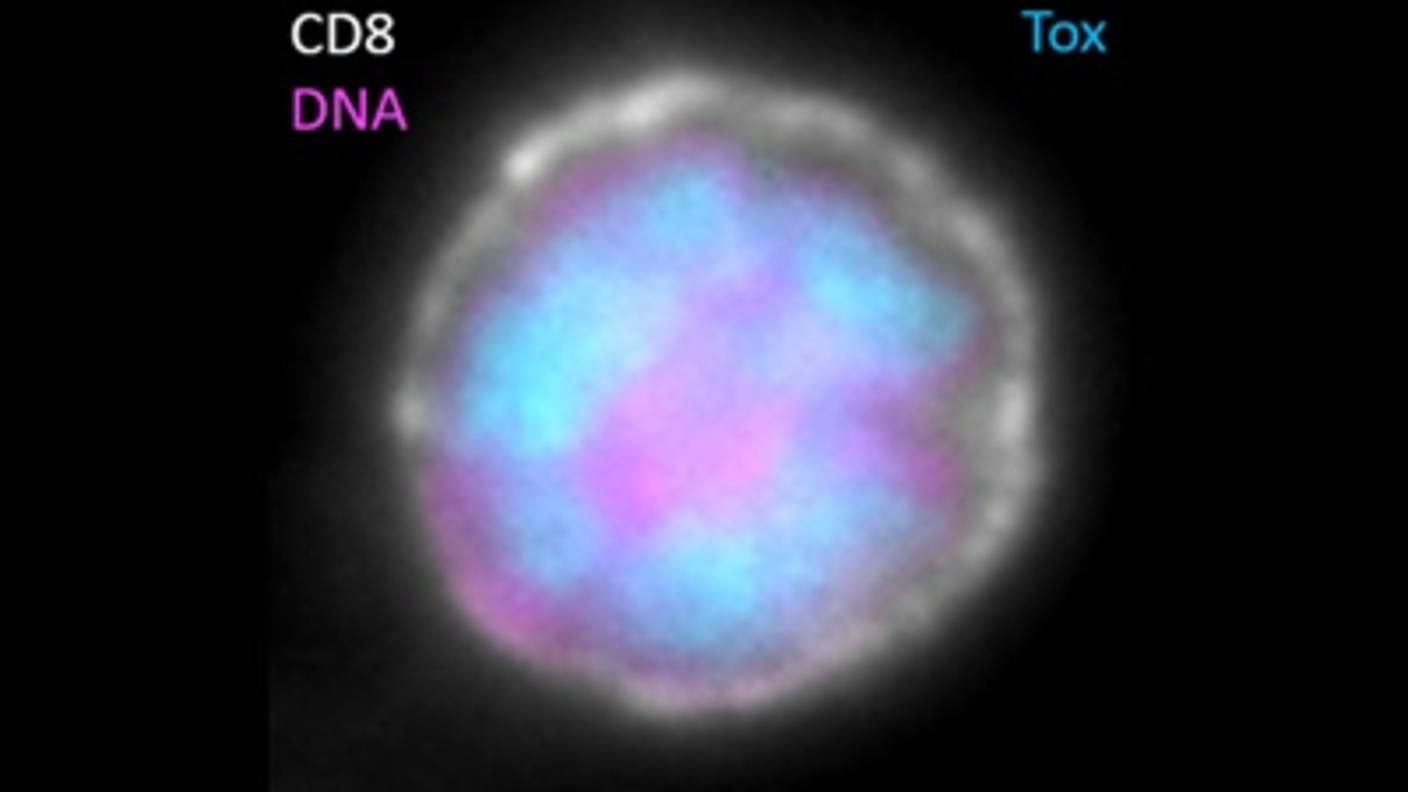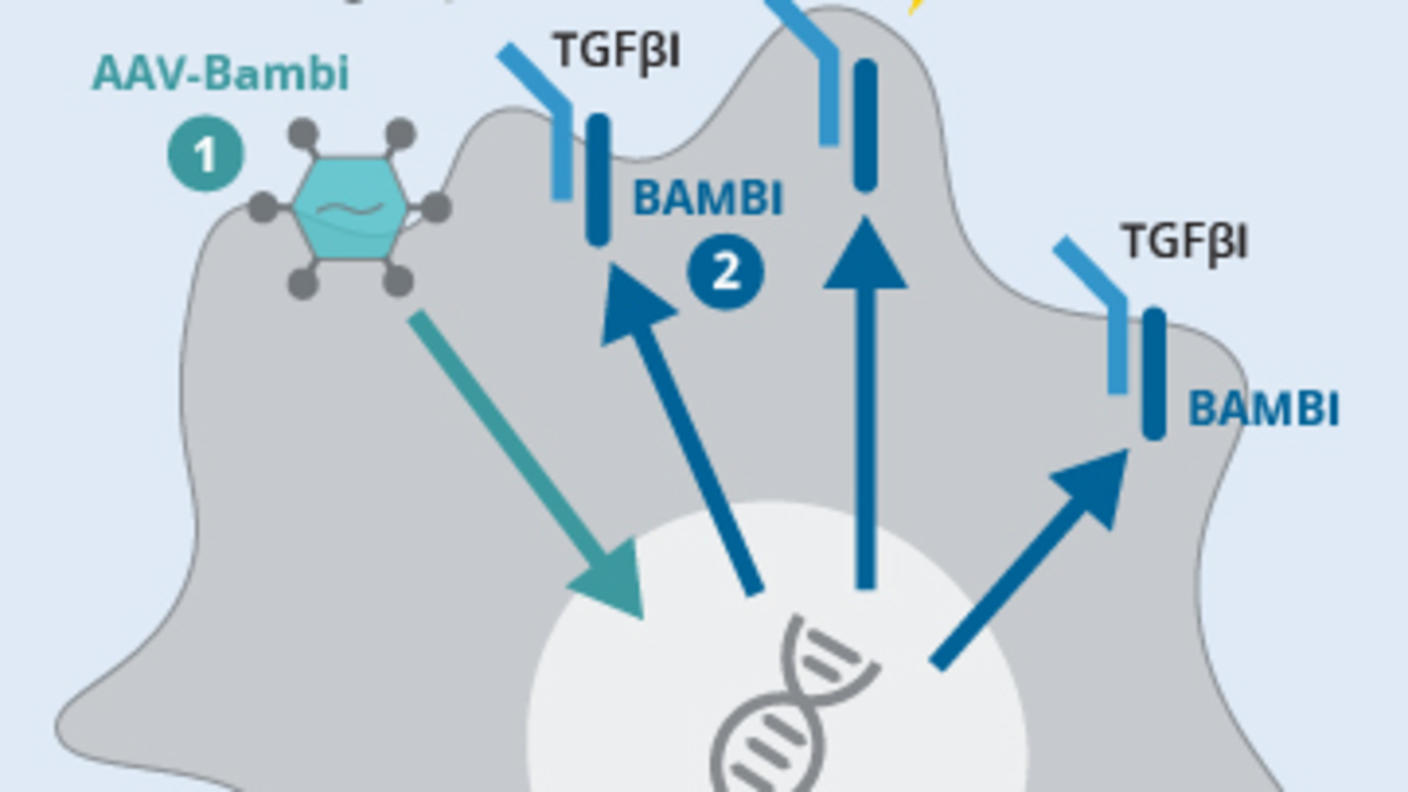Drug Combo JAKs Up Immunotherapy in Two Clinical Trials
, by Nadia Jaber
Two separate clinical trials have found that a class of drugs that stymie inflammation may improve the effectiveness of commonly used immunotherapies. In both trials—one involving people with lung cancer and the other with lymphoma—adding a JAK inhibitor to an immune checkpoint inhibitor shrank tumors in more than half of the participants.
Typically, immune checkpoint inhibitors, which are standard treatments for dozens of cancer types, only work for 15% to 60% of people who take them. But when these treatments do work, they can have astonishing effects, melting metastatic tumors and keeping them away for years.
Over the past decade, scientists have been searching up and down for ways to make these drugs work for more patients. In the new studies, researchers explored a possible role for JAK inhibitors, which dampen chronic inflammation and are used to treat inflammatory and autoimmune diseases like rheumatoid arthritis and psoriasis.
The results are impressive for a few reasons, experts said. In the lung cancer trial, the combination shrank the tumors of substantially more participants than is typically seen with an immune checkpoint inhibitor alone. And in the lymphoma trial, all the participants had already been treated with an immune checkpoint inhibitor that had stopped working. Both studies were published June 21 in Science.
The studies also uncovered why JAK inhibitors and immune checkpoint inhibitors appear to work well together. Immune checkpoint inhibitors unleash the activity of cancer-killing immune cells called T cells. And JAK inhibitors, the studies showed, reinvigorate burnt-out T cells—setting the stage for immune checkpoint inhibitors to turbocharge them against tumors.
Those findings highlight an important trend, according to Grégoire Altan-Bonnet, Ph.D., of NCI’s Laboratory of Integrative Cancer Immunology. “We are becoming more sophisticated in the ways we manipulate the immune response [to cancer],” said Dr. Altan-Bonnet, who wasn’t involved in either study.
The two trials involved people with different types of cancer, treated with different JAK inhibitors and immune checkpoint inhibitors, and with different timing of each drug’s administration, pointed out Andy Minn, M.D., Ph.D., one of the leaders of the lung cancer study.
“And yet we both reached the same conclusion, which to me is just really remarkable and provides a lot of motivation and hope that we're on to something,” said Dr. Minn, of the University of Pennsylvania Perelman School of Medicine and director of the Mark Foundation Center for Immunotherapy, Immune Signaling, and Radiation.
But there’s still a lot to learn about this combination approach, said the lymphoma study’s leader, John Teijaro, Ph.D., of Scripps Research Institute in California. “There’s still a long way to go in understanding how this works, what the best course is for patients, what the best JAK inhibitor is, when you should give it, and what dose you should give. They’re all open questions that need to be investigated,” he said.
Timing matters for tumor inflammation
JAK proteins—the targets of JAK inhibitors—are like puppet masters, pulling the strings that control numerous cellular functions, including inflammation and immune cell activity. And once immune checkpoint inhibitors came onto the scene, scientists quickly gathered loads of evidence that JAK proteins are also critical for these drugs to work.
So until now, the thought was that blocking JAK proteins with JAK inhibitors would only make immune checkpoint inhibitors less effective.
But Dr. Minn and Dr. Teijaro were finding the exact opposite could also be true. Dr. Minn’s group noticed that tumors in mice that grew back after immune checkpoint inhibitor treatment had high activity of JAK-regulated genes. And Dr. Teijaro’s team found that JAK inhibitors revived cancer-killing T cells.
“We had a lot of data that was pointing in this paradoxical direction,” Dr. Minn said. The researchers landed on a new idea: What if timing matters when it comes to JAK proteins and immune checkpoint inhibitors?
“And it turned out, we think that's the case,” Dr. Minn said.
They suspect that an initial, short burst of JAK-led inflammation activates T cells, setting the stage for immune checkpoint inhibitors to unleash the T cells against tumors. But if JAK proteins keep signaling on an endless loop, chronic inflammation sets in and cancer-killing T cells get burnt out—often called T cell exhaustion. And treating chronically inflamed tumors with immune checkpoint inhibitors is like pushing the “on” button of a toy with dead batteries.
So, both groups set out to see if JAK inhibitors could cool the flames of chronic inflammation while preserving that first spark needed for immune checkpoint inhibitors to work.
Rescuing immune checkpoint inhibitors
Both sets of researchers started by testing the combination strategy in mice implanted with various kinds of cancer. Combining a JAK inhibitor with an immune checkpoint inhibitor slowed tumor growth substantially more than either drug alone, both teams found.
Buoyed by their findings, Dr. Minn and his colleagues launched a clinical trial involving 21 people with metastatic non-small cell lung cancer. All patients received the immune checkpoint inhibitor pembrolizumab (Keytruda) plus the JAK inhibitor itacitinib.
The treatment partially or completely shrank the tumors of 14 of the 21 participants (67%). And it kept their tumors at bay for a median of more than 2 years. In other clinical trials, by contrast, tumors have been found to shrink in less than half of people with metastatic non-small cell lung cancer who get pembrolizumab as an initial treatment. And among those whose tumors do shrink, the treatment typically stops tumor growth for only a few months.
Dr. Teijaro and his colleagues connected with researchers at the University of Minnesota who were testing the JAK inhibitor ruxolitinib (Jakafi) and the immune checkpoint inhibitor nivolumab (Opdivo) in a clinical trial of 19 people with Hodgkin lymphoma. All participants had previously received an immune checkpoint inhibitor that hadn’t worked for them or had worked only marginally.
When immune checkpoint inhibitors fail for people with Hodgkin lymphoma, there are few treatment options left, Dr. Teijaro pointed out. “Their [cancer is] resistant to most [drugs] by that time. This is a really tough patient population to treat,” he said.
But when nivolumab was reintroduced with ruxolitinib, tumors shrank in 10 people (53%), including six patients whose tumors disappeared completely. Two years after the start of the trial, 46% of participants had no sign of their cancer growing back (disease progression). In contrast, 2-year progression-free survival was 23% in a small clinical trial of people with lymphoma who received nivolumab and another drug after nivolumab alone stopped working.
Side effects were infrequent in the two trials, and none of the patients in the lymphoma trial had to stop the treatment due to side effects, said another member of the Scripps team, Jaroslav Zak, Ph.D.
“Even anemia, which is quite common with ruxolitinib—most of these patients didn’t get anemia or any [blood cell–related] side effects that were sufficiently severe that they had to go off the therapy,” he added.
Rousing T cells and myeloid cells
When the researchers dug deeper, both groups saw that the combination treatment substantially altered the numbers and activities of various immune cells in both patients and mice.
As hoped, they saw that the treatments raised numbers of invigorated T cells for many patients. But additional data suggested that there’s a limit to what JAK inhibitors can do if a patient’s T cells are completely exhausted, noted Dr. Altan-Bonnet, which may be why the combination didn’t work for everyone.
JAK inhibitors also appear to do more than help exhausted T cells, Dr. Zak said. In the lymphoma trial, the treatment produced “an even more dramatic change in myeloid cells,” especially in people whose tumors completely disappeared, he said.
Myeloid cells are immune cells that can either restrain T cells or help them grow. The JAK inhibitor tipped the scales, pushing myeloid cells to be more helpful than harmful, he explained.
These results raise “hopes for myeloid [cell] modulation in the context of cancer therapy,” Dr. Zak said. “We have done really well with modulating T cells with checkpoint inhibitors, CAR T-cell therapy, and adoptive T-cell therapy. But I think we are far behind with myeloid cell modulation, and yet we know how important those cells are” to the success of immunotherapy, he said.
These findings about specific immune cells could eventually help researchers learn more about the best dose and timing of immunotherapies, wrote Massimo Gadina, Ph.D., and John O’Shea, M.D., of the National Institute of Arthritis and Musculoskeletal and Skin Diseases, in a commentary on the studies.


